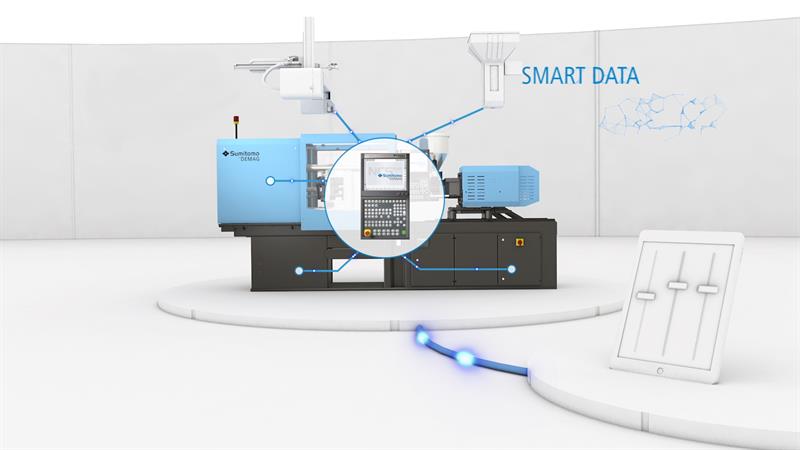“The idea that 3D printing will overthrow traditional manufacturing techniques – including moulding, forging, casting, and even subtractive CNC manufacturing – is simply scaremongering,” says Nigel Flowers UK managing director of Sumitomo (SHI) Demag, who shares several counterarguments for both techniques.
Economies of scale
“Currently, 3D printing today is neither fast nor cost effective enough to mass-manufacture plastic precision parts in large quantities,” Flowers says. “Where 3D printing is beneficial is for prototyping and for generating customised parts in low volumes.”
For several years, the medical sector has successfully used 3D printing to produce bespoke prosthetics, implants, hip replacements, hearing aids and even dentures. For these functional parts, injection moulding would not be financially viable due to the cost of creating a mould tool.
Similarly, aerospace manufacturers are embracing 3D printing to upgrade components and create replacement parts for maintenance, repair and overhaul (MRO). An Airbus report anticipates MRO spend doubling to over $120bn per year in the next two decades. For aircraft parts with long lead times, complicated supply chains or that are obsolete, 3D printing offers an agile alternative.
Flowers adds: “The tipping point for injection moulding will come relatively quickly once mass-production ramps up. Typically, a mass moulder producing electronic casings estimates a ROI of 10,000 parts.”
Environmental footprint
The sustainability credentials of 3D printing are often inconclusive. While some advocates say printing locally saves on transportation costs, gauging the true environmental impact is more complex.
“Today’s injection moulding machines, particularly all-electric systems, continue to cut energy use,” Flowers explains: “The latest Sumitomo (SHI) Demag IntElect range for example uses the same amount of energy as switching on a household kettle – some 3D printing processes used 50-100 times more electricity than injection moulding machines.”
Many equate 3D printing with less material waste. Yet in rapid prototyping where the development cycle could involve printing multiple versions, waste is still high. Additionally, because of the mix of different materials, grinding up and recycling printed parts that have been 3D printed can be challenging.
In plastic moulding, providing a regrind mix that falls within an acceptable range and the molecular weight of the polymer, hasn’t been compromised and meets specifications, the mix (typically 10% regrind to virgin polymer) can be run through a machine. Nevertheless, moulders remain cautious of using reground plastics, especially for precision parts, arguing that even subtle changes to the original material could affect the shrinkage, cause flash or change the cosmetic appearance.
Additive manufacturing can, however, assist with extending the life of products, printing obsolete moulded parts no longer in production. It can also manufacture parts with complex geometries and features previously considered impossible.
Real time manufacturing
Printing an individual part, for example a surgical heart valve, takes time so it’s questionable if this can be defined as real-time manufacturing.
Instead, smart factories with fleets of injection moulding machines, connected and capturing data to achieve speed and scale is probably the most revolutionary example, especially when production schedules can be automatically adjusted based on stock levels.
“During times of tension and volatile trade policies, being able to produce components locally rather than relying on imports has driven many manufacturers to pull forward their reshoring plans and switch to domestic moulding providers. The key rationale has been faster turnaround of components, ensuring business security and reassuring customers reliant on component orders being fulfilled,” says Flowers.

Repeatability
For mass volume production runs, repeatability is non-negotiable. Today’s injection moulding machines deliver quality parts, consistently, with tight tolerances and a high cosmetic finish, thousands to millions of times in succession.
Quality
For short run commodity parts that don’t have critical dimensions or demanding mechanical-performance requirements, additive manufacturing can deliver functional parts. However, because parts are printed in layers, most 3D components need some post -processing work to create a smooth surface finish. This adds to the overall processing time and therefore cost.
In injection moulding, finish and surface texture can be created by mould tools. Once moulded the part may need to undergo additional post production finishes, such as degating, removing excess material if the resin bleeds out, and potentially stamping and decorating. However, these processes are often automated within the moulding cell.
Traceability
For industries like aerospace and medical, traceability of 3D printed parts has been raised as a key concern. Counterfeiting and IP protection is another key issue.
To address this, software and hardware needs to be fully connected and the 3D print supply chain completely transparent. Developments are in the early stages but include printing QR codes and embedding digital files into components.
Traceability in injection moulding is more advanced, with most machinery suppliers providing secure data capture and documentation. Recently, Sumitomo (SHI) Demag developed an In Mould Decorating (IMD) cell, whereby each moulded part can be issued with a Unique Device Identifier (UDI), with all processing data held securely by a manufacturing executive system (MES).
Strength
Variations in strength and durability will depend on materials used. A 3D printer creates a part in layers. Although the 2D contour might be strong, Flowers says the bonding between PET layers will not be comparable to a solid mass that has been moulded.
A time and a place
To summarise, Flowers emphasises that there’s room for both techniques and technologies: “3D printing is great for iterating designs and we are increasingly seeing moulders using them to test out new concepts and create tooling prototypes. Rather that pitching the two against each other, recognise that they each have distinct advantages and that the level of innovation will continue to accelerate for both.”





